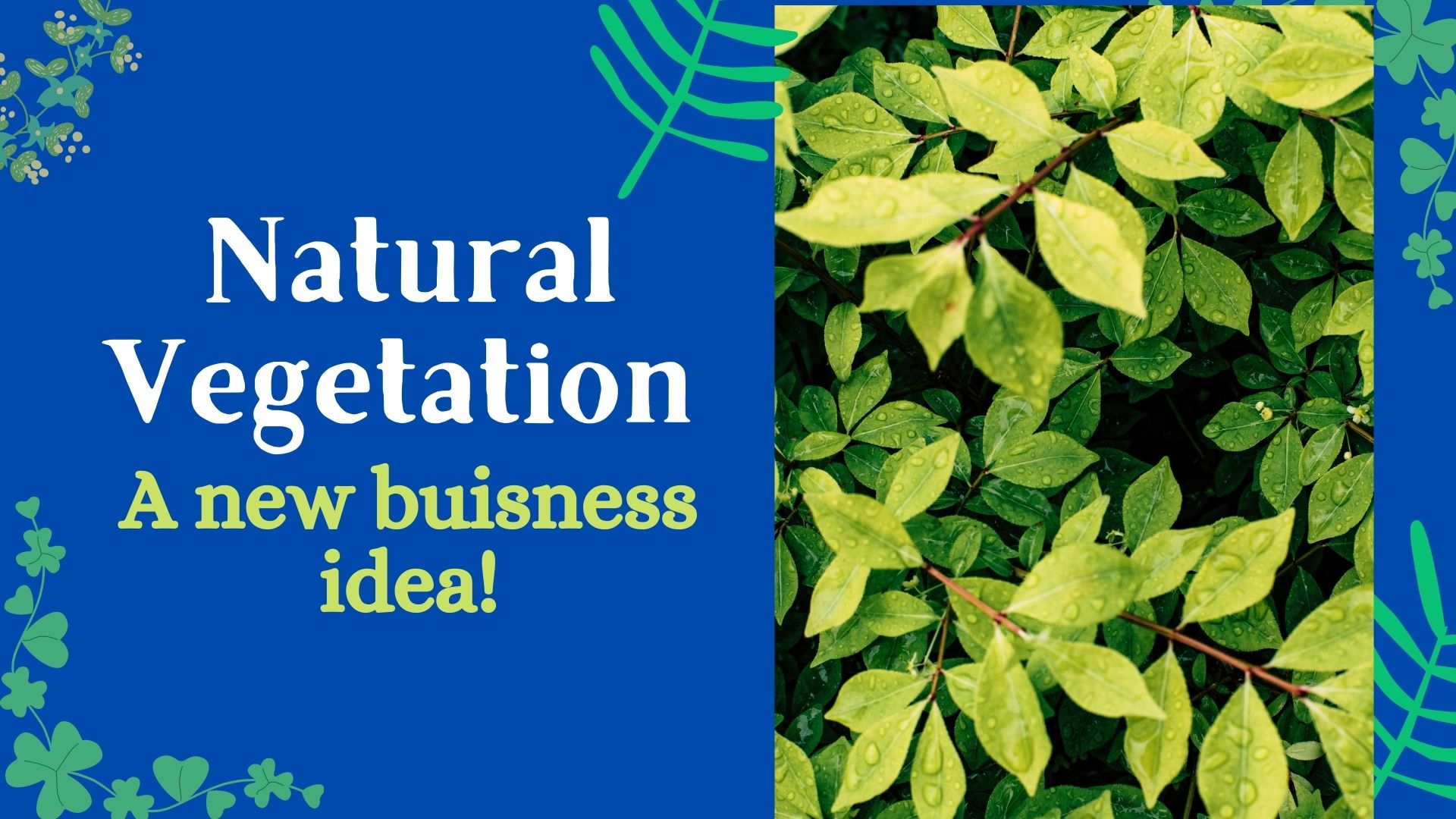If you are an animal lover and own a pet, you surely take utmost care of your darling pet right? But what about the rest of the animals who exist in this world? Survival of the fittest has always been true, so those animals do not die, in fact, they learn the hard way to survive, and in the process, they build strong immunity. Similarly, natural vegetation grows naturally, without any support or interference from human beings. This type of natural vegetation occurs based on climatic conditions and the location of the place, surviving against all odds.
Table of Contents
What is natural vegetation?
Plants, bushes, flowers, trees, fruits, and herbs that grow naturally without any hindrance or support of humans is called natural vegetation. It survives on its own depending upon the supportive climatic conditions, fertile soil, supply of water through lakes, rain, or other sources. Natural vegetation grows naturally and learns to survive through its adaptability. This vegetation is called “virgin vegetation” since they have been away from any sort of human touch for a longer duration.
Types of Natural Vegetation
There are various types of natural vegetation that exist around the world, especially in India.
- Tropical Rain Forests
These tropical rain forests grow naturally in areas with heavy rainfall and fertile soil. In India, tropical rain forests are mostly found in Western ghats, Arunachal Pradesh, Meghalaya, Assam, Nagaland, Himalayas, and the Andaman Islands. Sandalwood, rosewood, bamboos, mahogany are some examples of tropical rain forests.
- Deciduous Forests
These forests stem in locations with heavy monsoons, though lesser than that of tropical rain forests. They are mostly found in the areas like Himalayas, Assam, West Bengal, Bihar, Jharkhand, Orissa, Madhya Pradesh, Chhattisgarh, Maharashtra, Karnataka. Teak, Sal, deodar, bluegum, ebony, sisam, jack-fruit, mahua, palash, arjun are some examples of deciduous forests.
- Dry Deciduous Forests
These types of dry deciduous forests are those which are found in dry locations, with moderate rainfall. Found in Rajasthan, Punjab, Haryana, and parts of Uttar Pradesh and Madhya Pradesh.
- Desert Vegetation
This type of vegetation is found in dry desert areas with a scarcity of water. Only those plants which have the capability to survive with minimal water requirements will grow here. Dates are usually grown here. Found in Rajasthan and parts of Gujarat.
- Mangrove Forests
They are also known as “Littoral Forests.” In West Bengal these forests are known as ‘Sundarbans.’ These forests get their water supply from the tidal waves thus found along with the areas of deltas, like the deltas of the Ganga, Mahanadi, Godavari, Krishna, and Kaveri. Palm and coconut trees belong to the Mangrow forest.
- Mountain Forests
As the name suggests this type of vegetation is usually found on mountain slopes. They are found mostly in areas like the Himalayas. Pine, fir, oak, maple, deodar, laurel, spruce, and cedar grow are some of the examples. Alpine grasslands also grow at the highest snow-covered peak.

Above are some of the types of natural vegetation which flourish in India. A lot of trees, herbs, plants, wood, fruits which are widely used for consumption in India are derived from this vegetation. In fact, some of them are exported to different countries.
How to invest in Natural Vegetation to earn profits?
Natural vegetation has been a source of supply of precious plants, trees, fruits, herbs which are rich in nutrition, have huge medicinal value, and are used as raw material for various products. Now let us understand how should you invest in natural vegetation to earn profits.
- Identify the natural vegetation nearby
You need to identify what type of natural vegetation grows in the area where you are located. Know what types of plants, trees, fruits, bushes grow or exist there naturally. Understanding your area, nearby areas is a task here. As knowing about what grows locally, will require some exploration of the place from your end. In fact you may approach local people to understand more about the climate, vegetation, types of fruits and vegetables it is famous for.
- Identify the final output in demand
Once you have spotted where natural vegetation occurs, now next task is to identify the natural product which is in demand. Find out if the plants, woods, fruits, trees themselves, or their by-products are consumable in any way possible? Find out if they can be used in medicines? Find out the demand in the market. To match the demand, you may take the charge of supplying such output chosen. Sandalwood, dates, teak, and many more are precious, rare, and definitely in demand in all seasons. Why not take the opportunity to sell these once you know what do people need, and what can be produced from this vegetation.
- Strategize business
Once you have chosen or finalized the natural products from this vegetation then the next step is to strategize it into a business model. Natural vegetation is unaltered by humans, thus carefully take a part of the chosen plant, tree, bush, or flower along with roots and replant it in your open garden area. Grow the part taken out in your area successfully and expand the production. Once the production happens, now sell them to the local market as well as tie up contracts with other online sellers and marketplaces who need the crops produced. If you know how to use the crops further to produce some products with huge demand then do so.
Example – A person spotted a wildflower growing in bushes with a refreshing smell, he plucked them, made a bouquet out of it, and took it to the marketplace to sell. He was able to sell it for a whopping Rs100/-, well he marketed it as a flower that is considered lucky, can be used as a room freshener, and to add on it is believed to attract wealth. You see how he made money out of this. This may become his small-scale business.
- Go Green & Preserve
In the process of using natural vegetation for your benefit, remember to use organic raw materials to enhance the quality of crops produced. Preserving this vegetation should also be focussed upon as many herbs which are of medicinal value are nearing extinction. Do not disturb the vegetation growing, just cultivate a part of it into your area. Keep expanding to help meet the demand of the people with the end product so obtained.
This is how this vegetation can help you earn huge profits while preserving the natural ecosystem.
Benefits of Natural Vegetation
- Sustain Ecosystem – Natural vegetation grows naturally. It supports the ecosystem and maintains balance wherever it grows. It acts as a food supply for all the animals within that area.
- Maintains environment – Natural vegetation helps maintain the environment, by reducing carbon footprints, spreading oxygen, and maintaining the environment. Reducing global warming goes in a long way in stabilizing the environment.
- Medicinal value – Herbs, plants growing as part of natural vegetation are used as medicines. These are used as Ayurveda medicines or as raw materials to produce processed drugs, medicines used in the treatment of various diseases.
- Rich minerals and vitamins – Output from natural vegetation are immensely useful for people. Use natural vegetation to explore various products to meet people’s needs. The trees, plants, wood, fruits are extremely rich in nutrition. They contain a lot of minerals and vitamins.
FunFact:
UNESCO marks the 50th anniversary of biosphere preservation.
What are your thoughts on the above?
Let us help you multiply money! Subscribe us 😊


